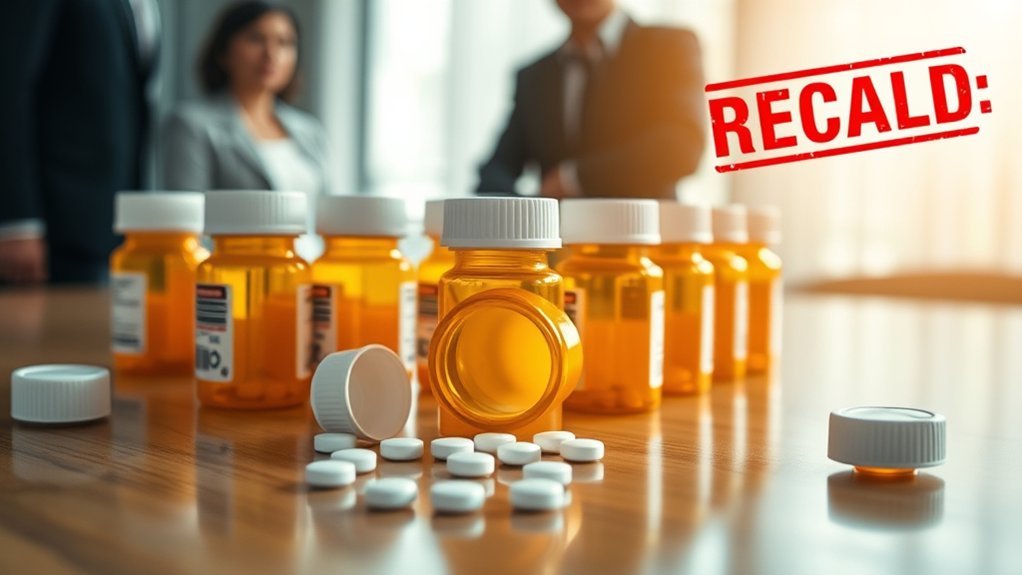Did you know that in recent years, over 1,000 products have been recalled in the U.S. alone due to safety concerns? Identifying symptoms of unsafe products can be vital for your well-being. Whether it’s a strange odor from food or unusual noises from an appliance, recognizing these signs can prevent potential harm. Understanding what to look for is essential, but do you know the most common indicators of danger in the products you use daily?
Understanding Product Recalls: What They Are and Why They Matter
When you purchase a product, you expect it to be safe and reliable; however, recalls are an important safety measure that can protect you and other consumers from potential harm.
A product recall occurs when a manufacturer identifies a defect or safety issue that poses a risk. This action can involve removing the product from shelves or urging consumers to return it for a refund or repair.
Understanding recalls matters because they reflect a company’s commitment to your safety and well-being. By staying informed about recalls, you empower yourself to make safer choices and avoid potential dangers.
It’s essential to regularly check recall databases or subscribe to alerts, ensuring you’re always aware of any threats that could affect your health or safety.
Common Symptoms of Unsafe Products
Recognizing the common symptoms of unsafe products can help you identify potential hazards before they lead to serious issues.
One major symptom is unusual smells or tastes, which might indicate chemical contamination. Watch for physical defects like cracks, frayed wires, or loose parts; these can compromise safety.
If a product causes unexpected reactions, like skin irritations or allergic responses, it’s essential to stop using it immediately.
Additionally, products that overheat or malfunction frequently can signal underlying safety concerns.
Be attentive to recalls or safety alerts related to items you own, as these are clear indicators of potential dangers.
Trust your instincts—if something feels off, it’s better to err on the side of caution and seek alternatives.
Signs of Contamination in Food Items
How can you tell if your food has been contaminated? First, check for unusual odors; spoiled or off-smelling food is a red flag.
Next, examine the appearance—mold, discoloration, or an unusual texture indicates potential contamination. If you notice any slimy or sticky residue, it’s best to discard the item.
Examine your food for mold, discoloration, or unusual textures; slimy or sticky residues are clear signs to discard it.
Be cautious with packaging as well; damaged or bloated packaging can signify bacterial growth. Always pay attention to expiration dates; consuming expired products increases your risk.
Finally, trust your instincts—if something seems off, don’t hesitate to throw it away.
Warning Indicators for Defective Appliances
Contamination isn’t limited to food; defective appliances can pose serious risks in your home. Recognizing warning indicators is vital for your safety. Watch out for these signs:
| Indicator | Description | Action Required |
|---|---|---|
| Unusual noises | Grinding or popping sounds | Disconnect immediately |
| Overheating | Appliances excessively hot to touch | Turn off and unplug |
| Flickering lights | Inconsistent power supply | Seek professional help |
| Frequent tripping | Circuit breakers constantly activate | Inspect wiring |
| Leaks or moisture | Visible water around appliances | Stop usage and dry area |
How to Stay Informed About Product Recalls
Staying updated on product recalls is essential for ensuring your safety and protecting your home. To stay informed, subscribe to alerts from reputable sources like the U.S. Consumer Product Safety Commission (CPSC) and the Food and Drug Administration (FDA).
These organizations regularly publish recall notices that can directly impact your health and safety. Additionally, consider following news outlets and consumer advocacy groups on social media for real-time updates.
Check product registration cards, as many manufacturers notify customers directly about recalls. Finally, make it a habit to review recall lists periodically.
Frequently Asked Questions
How Can I Report a Product I Suspect Is Unsafe?
To report an unsafe product, gather evidence, then contact your local consumer safety agency or the manufacturer directly. You can also file a complaint online, ensuring your concerns reach the appropriate authorities for action.
Are Recalls Only Issued for Food Products?
No, recalls aren’t limited to food products. They can occur for various items, including electronics, toys, and vehicles. If you suspect a product’s unsafe, it’s essential to stay informed about potential recalls in all categories.
What Happens to Recalled Products?
Recalled products are like fallen leaves, swept away to prevent further harm. They’re often removed from shelves, returned to manufacturers, or destroyed, ensuring safety and freeing consumers from potential risks associated with those items.
Can I Return a Recalled Product for a Refund?
Yes, you can usually return a recalled product for a refund. Check the retailer’s return policy or the manufacturer’s guidelines, as they often provide specific instructions and may even cover shipping costs for returns.
How Do Recalls Affect Product Warranties?
Recalls can affect warranties by voiding them if the product’s misuse leads to the recall. However, if the recall is due to manufacturing defects, you’re often still entitled to warranty coverage or repair services.
Conclusion
In the world of consumer goods, staying vigilant is your shield against potential dangers. By recognizing the signs of unsafe products—whether it’s an odd smell wafting from your pantry or the unsettling hum of an appliance—you safeguard not just your health but your peace of mind. Knowledge is a powerful ally; make it a habit to stay updated on recalls. In doing so, you weave a protective tapestry that shields you and your loved ones from unseen threats.
